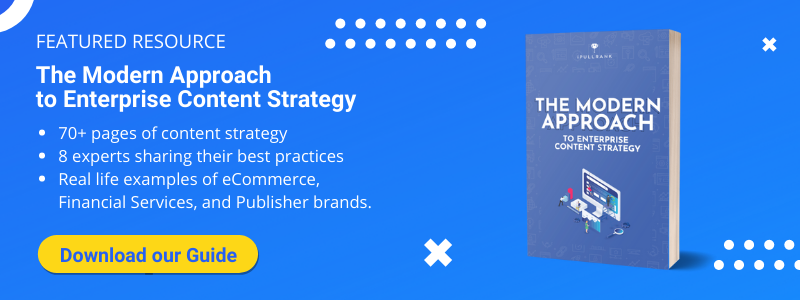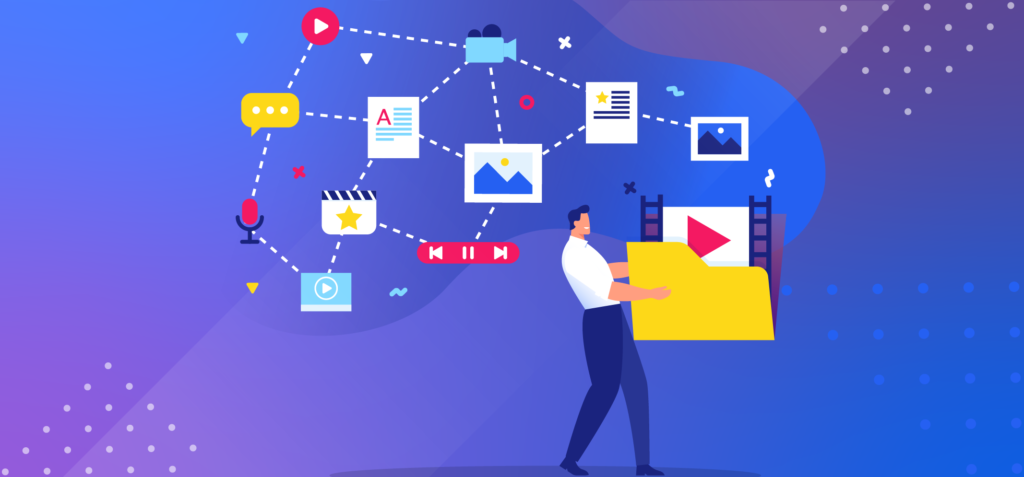You’ve researched your market. You’ve studied their pain points. You’ve crafted the perfect content and visuals and optimized your content for SEO. You’re a good company that has created an excellent piece of content and you want as many eyes on it as possible. You push it live. And you wait, wait, and wait. Readers are not flocking to your content. What gives?
Creating great content is only half the battle. (Check out our article on why good companies create bad content if you need a refresher on what great content is.) Getting that content in front of readers and potential customers is the other half. Promoting content is not as simple as posting to your social channels and expecting an avalanche of retweets. We’re in an attention-deficit economy and there is more content than there are eyes. That means to get in front of your desired audience your content distribution plan has to be strategic.
WHAT IS STRATEGIC CONTENT DISTRIBUTION?
Before any promotion begins, you have to understand the entire universe your content will exist in. This means understanding the media landscape and developing a media mix to suit your business goals. The three media channels for content promotion are Owned, Earned, and Paid.

Knowing what is available and what kind of results you want, allows you to make informed decisions on where to place your content and how.
A sound and strategic content distribution plan takes into account:
- What your content is
- What the right media mix/proper channels for it are
- How your internal content teams work
The common misconception is that promotion begins once you hit publish. But before going live on a piece of content, you should already have a plan in place to strike while the iron is hot and not lose precious promotion time.
BEFORE YOU PUBLISH
Before your content goes live, there are a few things to consider and prepare to ensure that you get the most from your promotion efforts.
STEP #1 – Determine Audience
Knowing who your content is for will ultimately make it easier to find that audience when it comes time to promote. The audience, search demand and design should have been addressed in the ideation phase and worked toward during the creation phase (read more on what it takes to get remarkable content done – spoiler, A LOT of talented hands).
Knowing your audience clearly will determine exactly which platforms you promote on and how.
STEP #2 – Choose the Right Channels
It’s easy enough to publish an article and post it immediately to Twitter, Facebook, and LinkedIn. Or post a video and slap it on YouTube and trim a clip for Instagram. Those are fine ways to promote—if they are the right channels for that piece of content.
A highly technical video may not garner the best engagement on Instagram. A link to an E-book may not be well received on Twitter (a sponsored post with a download CTA may work). This is to say that examining the channel and how the audience engages will help determine the right kinds of content to promote there.
Here are some stats on social media engagement to help you determine the right channel: *data from Hootsuite

STEP #3 – Devise a Plan for Each Media Channel
Now that you’re armed with stats on each channels’ usage and activity, you can determine the right channels and devise a plan for each. How will you post to them? How often? What is the best content type for each platform?
OWNED:
You have the greatest flexibility over owned channels. Determine when your content will go live and when it will be posted to your social platforms. Prepare assets from the flagship piece to post on your platform (like our nifty infographic above). Read more on creating multi-stream microcontent.
TIP: Get creative with posting to owned networks. If you typically share links, share photos. If you post to your feed, add a corresponding post to your Stories.
EARNED:
Earned media is the gift that keeps on giving but it does sometimes need a push. Incorporate influencer reach-outs to nurture sharing. Monitor your brand and website for any alerts and be sure to repost/like your mentions.
TIP: Work with influencers that you already have existing relationships with. There’s nothing more annoying than @ mentioning or cold-emailing a complete stranger to share your content.
PAID:
You’ve seen those paid modules at the end of a post. There is also social advertising and PPC. Deciding whether to assign a budget to a piece of content really depends on the goals. For content with a lead generation focus, doing paid distribution may help you reach lead goals sooner and cost-effectively. For more visual content, social media advertising may boost views.
TIP: Here’s a great guide to native advertising and gearing your paid strategy to mobile.
STEP #4 – Ensure Proper Tracking is Implemented
This part is important and often gets neglected in content distribution. Track everything! If you have devised a plan for where you will promote your content you can create custom tracking URLs (Use the GA UTM builder to generate campaign URL parameters) for each channel. This will give you a clear view of which promotion channels worked the most effectively and how visitors got to your page.
TIP: Set up goal tracking for flagship content. Resource-heavy pieces of content may have multiple goalposts: visits, time spent, downloads, leads, etc… Create goals for each important metric.
TIME TO GO LIVE!
STEP #5 – QA and Publish Content
Here’s a checklist to run through before you go live:
- Is spelling and grammar correct?
- Do all of the links work?
- Are all images properly sized and high resolution?
- Do interactive features function properly?
- Have all supporting micro-content assets been created?
- Is all social metadata optimized and implemented?
- Are all social media posts written & approved?
MONITOR & TRACK PERFORMANCE
A large part of a strategic content distribution plan is aggregating performance data to make informed decisions going forward. With proper URL tracking, you can determine which channels are the top and best performers as well as which pieces of content perform the best for specific metrics.
STEP #6 – Monitor and Track Performance
Conversion goals are clearly the goalposts that all distribution efforts are driving to. Every piece of content should clearly know what it is trying to achieve.
Performance metrics are not to be ignored, however. Things like traffic, time on page, and bounce rate are key indicators of how engaging a piece is and give crucial insight on how to move visitors to subscribers, subscribers to customers.
Here are some content goals and metrics to monitor and track:
- Goal Conversions
- Email Opt-In
- Content Downloads
- Purchase or Checkout
- Performance
- Traffic
- Time on Page
- Bounce Rate by Referrer
- Total Shares
- Social Engagement
- Shares/Reshares by Platform
- Likes by Platform
- Earned
- Links Earned
- Social Media Mentions
- Paid
- Impressions
- CTR
OPTIMIZING THE WORKFLOW
An often neglected part of the content distribution plan is the workflow. Any process needs to be examined and revised based on how well it works. With content distribution, keep in mind who all of the players are and the turnaround time needed to get content published and promoted.
STEP #7 – Have a Reporting Post-Mortem
On a monthly basis review content performance with the entire team. Gather strategists, writers, social media analysts, data analysts and present the findings. Outline which channels worked, which efforts could have done better, and flag any bottlenecks.
TIP: Automation tools like CoSchedule, Sprout Social and Hootsuite can shave time off of social media management. Be sure to QA the social calendar, import posts, and schedule.
STEP #8 – Repeat
The best part of having a strategic content distribution plan is that it has been vetted based on your audience and your goals. By setting the strategic foundation and using performance data to qualify that strategy, your distribution plan will only get more effective as you promote.

Need EXPERT HELP with a data-driven CONTENT STRATEGY? CONTACT US!
How have you implemented content distribution across your organization? What tools do you use to automate owned and paid efforts? To monitor earned mentions?







